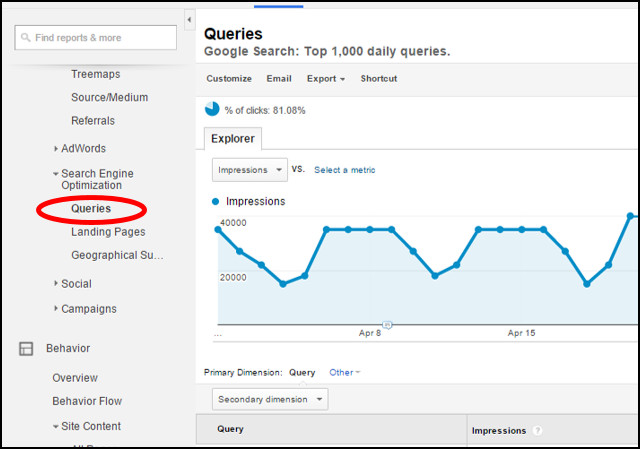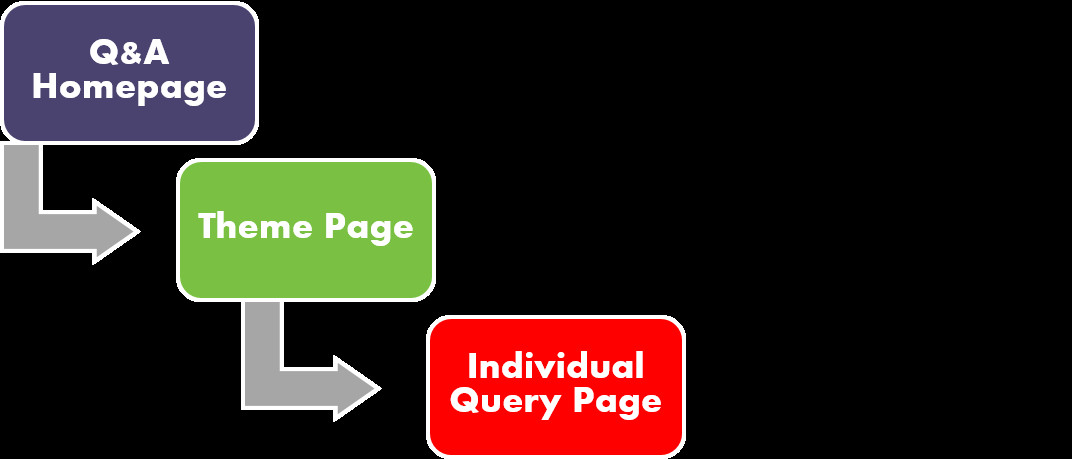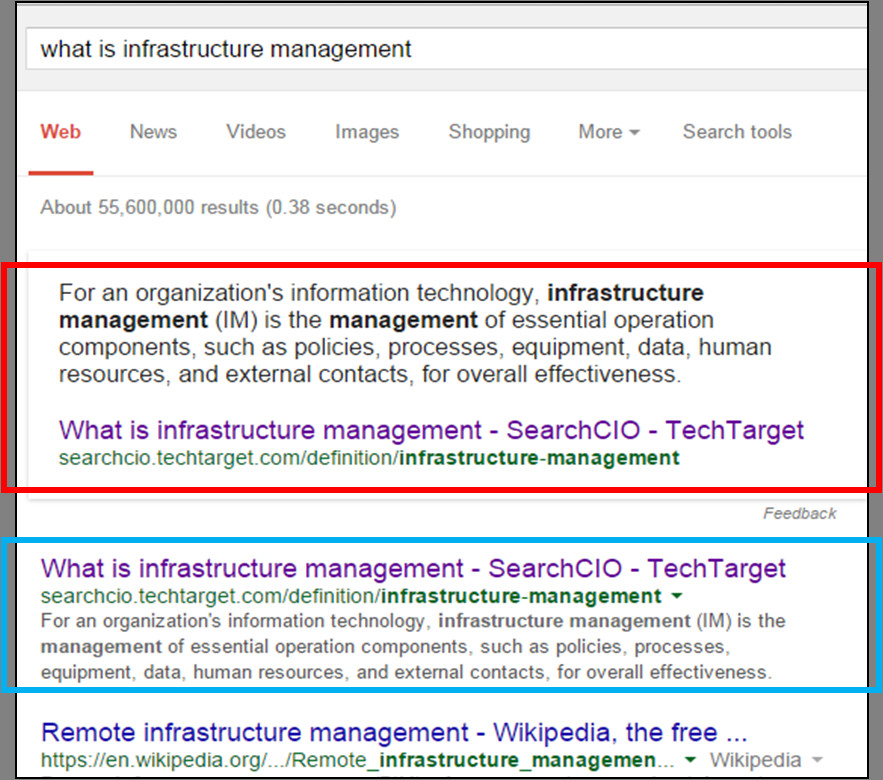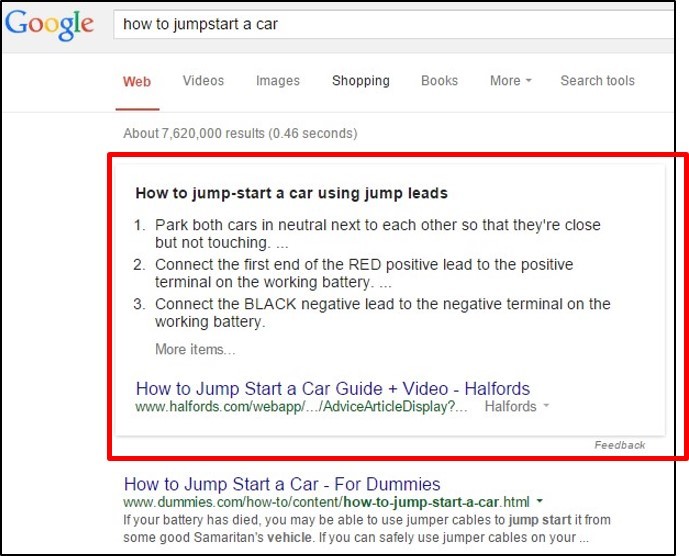Over the years, SEO has evolved greatly with the ever changing algorithms of Google. But there is one thing which is, was, and always will be loved by Google – fresh, intent-based, and unique content!
While the first type of content that may come to your mind hearing this may be “Blogs”, I am talking about a different approach that I feel is underrated – Creating a Q&A section on your website.
Online consumers at each stage of the buying cycle always have their own set of questions related to various products or services. Pick up any business domain; say Finance, Technology, Automobile, Travel, Legal etc. there will always be people who want to get the best answers on Google in minimum amount of time. This is where an extensive Q&A section can help. Barring e-commerce sites which are not much into knowledge sharing, every other business (small, medium or huge) can utilize this approach effectively. This strategy can help them become a one-stop source of useful information related to their domain.
Taking this to the next level, this blog will explain as to how you should optimize this section for the Google Quick Answer Box.
What is a Google Quick Answer Box?
An “answer box” is a search engine result page (SERP) feature displayed above the organic results and aimed at providing the best result (with its source) to the searcher. In most cases, websites featured in answer boxes are highly authoritative domains with well-structured content for the best user experience.
Here is an example for the search, “what is iot”:

Why should my website aim for Answer Box?
In simple words, the result featuring in this box is the BEST according to Google. Moreover, the website featured in this box is one of the top 10 organic results. It means that the website dominates the first page of Google SERP with double listings i.e. Answer Box and Organic Listing both! This naturally increases the probability of users clicking on your website as it is capturing maximum search landscape on page #1 of Google. And you don’t want your competitor to rule page #1 of SERPs right? So let’s come to the point. How can you give it your best shot to feature your Q&A section in these super awesome in-your-face answer boxes?
Let’s get started!
Select the right queries
Apart from the usual brainstorming for queries based on your industry knowledge, here are few other ideas on how to select the best questions related to your business for the Q&A section –
1. Analyze search-queries data from Google Analytics
- Following is a regex you may use to identify relevant queries which are being picked up in Google Webmaster Tools-
\b(define|definition|meaning|does|do|who|what|where|when|why|how|will|can|\? |am|is|are|was|were|be|being|been|versus|vs|vs\.|best)\b
- Next, extract the queries data and exclude all the brand terms
- Now for the terms which remain, check for Search Volumes and Rankings. Post this, you should get a decent list of terms which should definitely be considered right in the first phase of your Q&A creation. Reason: These are few low hanging fruits which will help you get the much needed boost right at the start
2. Analyze internal site search data to help identify and refine terms and queries. (Learn more about internal site search here.)
3. Review your competitors for a similar Q&A section (i.e., glossary, Q&A, FAQ) and identify the important terms on which they focus.
4. Stay updated with your industry experts and try to incorporate the trending topics in the form of questions.
5. Incorporate queries from Google’s latest “People Also Ask Box” feature.
Incorporate the must-haves
I break down the priority pages of this section as Q&A home page, Theme page, and Individual query page. You may want to include sub-theme pages for priority themes depending on the depth of your section.
Here are the key elements to consider for each page so your website Q&A has answer-box potential:
Q&A Home page
- Intro paragraph – A short but impressive introduction to the Q&A guides users on how to browse for their term, query, or theme of interest. Target keywords such as “definitions,” “terms,” “queries,” “popular terms,” etc. The purpose for this paragraph is to convince users that your Q&A covers anything and everything they want to know about your industry.
- Internal Search should also be added from users’ perspective. They should have the option to search for their term/query of interest. Tracking these later will help you refine and/or add more queries.
- Browse by Theme – Categorizing queries into themes is recommended both for search spiders and users. Ideally, users should get to know what all themes are covered in your Q&A. techtarget.com has done this pretty well.
I am not a big fan of the “Browse Alphabetically” option, but then it’s a good way to increase the number of pages and internal linking on your website. I am talking about a page like this which is not meant to rank.
- What’s Trending – No prizes for guessing what this means. Showcase your high priority themes/queries upfront on the homepage. Also, Fancy things (not really fancy though) like Theme of the day or Query of the day can also be done to promote important topics.
- Recently Added – You can promote the recently added questions of your Q&A on the homepage. Investopedia can be referred for this.
Theme Page
Having a dedicated page for every theme will help in effective targeting of theme level keywords. For example, a dedicated page for the theme “Stock Market” can be optimized for keywords like stock market questions, stock market terms, stock market faqs and so on.
This page should essentially showcase all the queries which fall under this theme. Clicking on the query should take users to individual query pages. For e.g. Clicking on”What is Stock Market trading?” should take users to a page dedicated to this particular question.
Individual Query Page
This is the Game Changer! Individual query page is essentially a dedicated page which will contain the question along with its answer. These are the ones which get featured in the Google Answer Box. Following pointers should be taken into consideration while creating these pages:
- Depending on the query, words like “what”, “how”, “define”, “definition”, “when”, ”why” should be targeted in the URL, Page Title and H1 tag. E.g. For the search query “what is infrastructure management”, this page shows up in the Answer Box & #1 on organic listings too!
- Specifically for “How to” queries, make sure that your content is well structured in the form of bullet lists –
- For “what” queries, a Crisp, Precise and Unique answer should be present upfront on the page (right after the H1). Yes, this is the content which gets displayed in the answer box. The answer should be added as the meta description as well but should be limited to 165-170 characters
- URLs must have the entire queries (as far as possible). For e.g. mywebsite.com/qa/what-is-xyz or mywebsite.com/qa/how-to-do-xyz. Again, this will depend on the search volumes and relevancy. Accordingly “/what-is-xyz”, “/define-xyz” or “/xyz-definition” etc. may be selected
- Linking to your main services/product page related to the query is a MUST! This can be done via CTA buttons or internal linking from within the content. This will not only help in increasing the traffic to important pages but will enhance the overall internal linking of your site as well. For e.g. the What is stock market trading? page must have a link to the your main page which talks about all the stock market services you provide
- Related resources (blogs, articles, pdfs, research, brochures, videos, events, webinars etc.) must be included along with the Q&A. An engaging video or a detailed research pdf related to the query will give you that extra edge, making your content fantastic enough for the answer box
- Social Media sharing options should be provided as they will indirectly help in enhancing your brand presence
Last But Not the Least
Apart from the aforementioned pointers, there are certain basic best practices that should be taken care of –
- Link the Q&A section from Top Navigation, Footer and HTML Sitemap. It’s a constant source of fresh content on the site so increasing the number of entry points for the crawler is recommended
- Generate and optimize a separate XML Sitemap for the Q&A section. This will ensure faster indexation of your Q&A pages
- Optimize this section for Conversions – The intention of users landing on this section might not be to buy stuff or sign up for services. But adding a catchy Call to Action button or a short Sign Up form in the first fold of the page will do no harm
- It goes without saying that all your Q&A section content should be original. So it’s time to put on your thinking cap…or should I say Put on your Thinking White Hat!
I hope I have excited at least some of you to take this up for your website.
All The Best!
Written by
Priyam Srivastava







